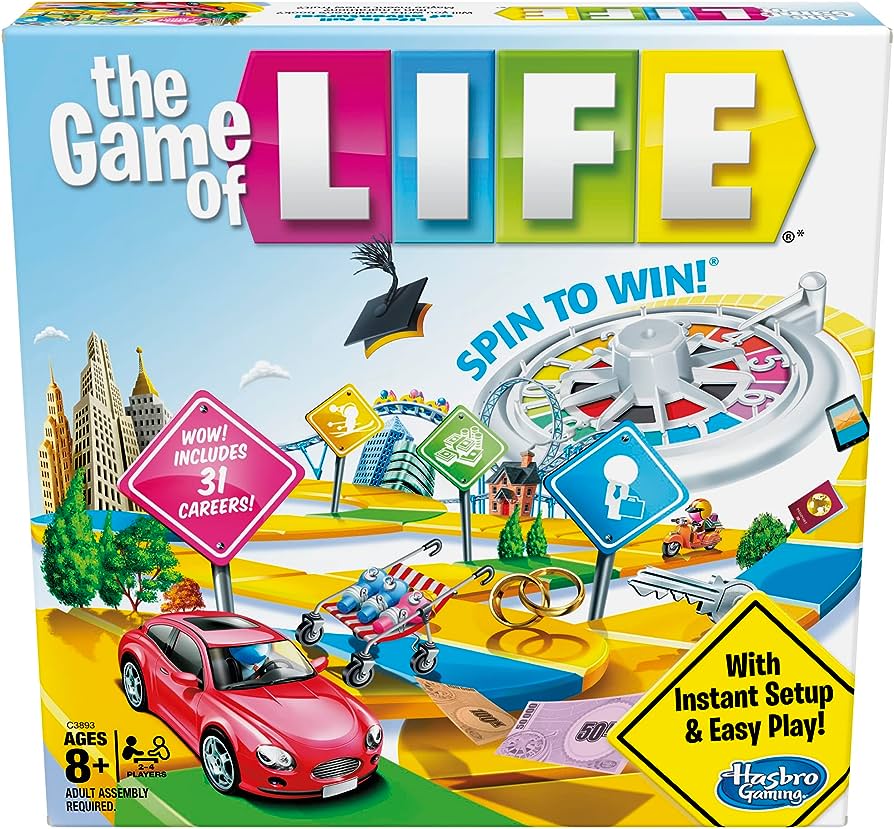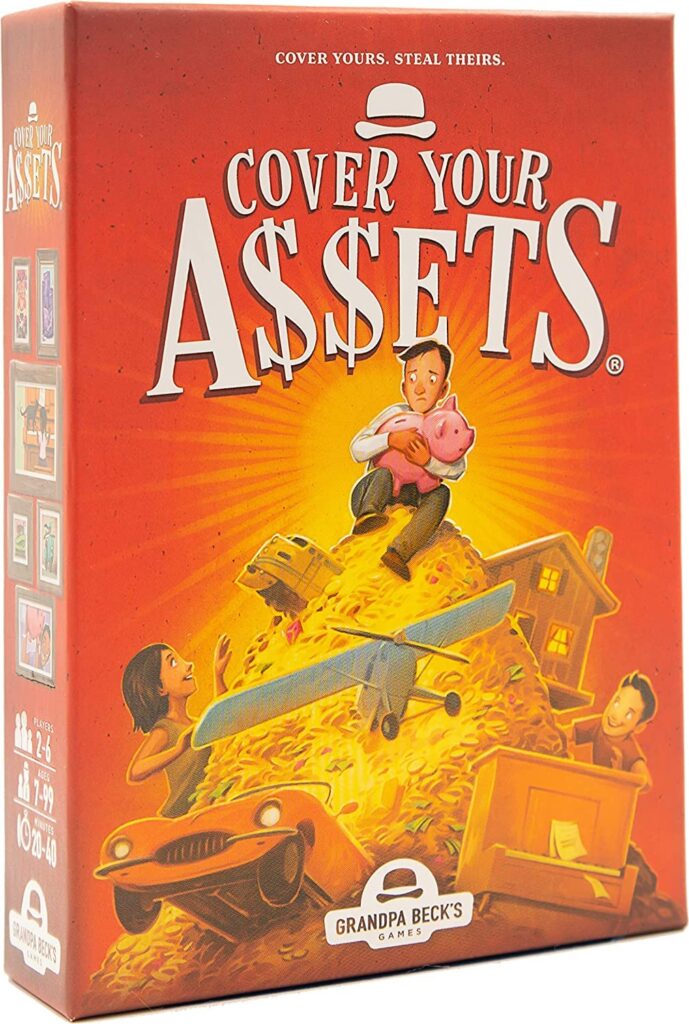In a world where money management and financial literacy are vital life skills, the idea of learning through play may seem unconventional. However, it’s precisely this unconventional approach that holds the key to unlocking a deeper understanding of finance. Games have long been recognized as powerful tools for education, fostering creativity, problem-solving, and critical thinking. When it comes to financial literacy, this unconventional classroom might just be the missing piece of the puzzle.
Picture this: Instead of flipping through dry textbooks or attending monotonous lectures, you can embark on thrilling adventures, make strategic decisions, and face financial challenges head-on—all while having fun. That’s the magic of using games to boost financial literacy.
In this article, we’ll explore the intriguing world of financial literacy games and delve into why they play a pivotal role in shaping our financial future. From teaching budgeting skills to imparting the nuances of investing, these games offer an interactive and engaging way to become financially savvy. So, get ready to roll the dice, invest virtual dollars, and manage virtual bank accounts, as we discover the importance of playing games to supercharge your financial knowledge.
1. “Cash Flow” by Rich Dad
“Cashflow,” developed by Robert Kiyosaki, the author of the best-selling book “Rich Dad Poor Dad,” is not your typical board game. It’s an educational board game designed to teach players the fundamental principles of financial literacy and investing.
In “Cashflow,” players take on the roles of investors and aim to escape the rat race by generating enough passive income to cover their monthly expenses and achieve financial independence. The game is divided into two tracks: the “Rat Race” and the “Fast Track.” In the Rat Race, players navigate through typical financial challenges, such as paying bills and managing debt. In the Fast Track, they learn advanced concepts like investing in real estate and businesses.
The game uses play money and assets to simulate financial decisions, including buying and selling stocks, real estate properties, and businesses. It encourages players to think strategically, analyze opportunities and risks, and develop a deeper understanding of the importance of managing assets and liabilities.
“Cashflow” serves as an excellent tool for both beginners and experienced investors to develop their financial acumen in a risk-free environment. It emphasizes the importance of financial education and making informed decisions, helping players gain the confidence and knowledge necessary for real-world financial success. So, if you’re looking to learn more about money management, investing, and escaping the rat race, “Cashflow” offers an engaging and educational way to do just that.
2. “Monopoly Builder” by Hasbro

“Monopoly” is a classic board game that has been enjoyed by millions of players worldwide since its creation in the early 20th century. Developed by Charles Darrow and first published by Parker Brothers in 1935, it has become one of the most iconic and enduring board games of all time.
The game’s objective is to become the wealthiest player by acquiring and developing properties, collecting rent from opponents, and strategically managing your finances. Here’s a brief summary of how the game is typically played:
Components: Monopoly includes a game board, property cards, play money, Chance and Community Chest cards, houses and hotels, tokens representing player pieces, and two six-sided dice.
Gameplay: Players move around the board by rolling the dice, and the goal is to buy properties and develop a real estate empire. Properties are divided into color groups, and owning all properties within a group allows players to build houses and eventually hotels, increasing the rent other players pay when landing on those properties.
Income and Expenses: Players collect rent when opponents land on their properties, pay rent when they land on properties owned by others, and also face various financial challenges through Chance and Community Chest cards. These cards can lead to rewards or setbacks, adding an element of luck to the game.
Bankruptcy: If a player cannot afford to pay rent or other financial obligations, they must sell houses and mortgage properties to raise the necessary funds. If they can’t recover, they go bankrupt, and their assets are typically auctioned off to the highest bidder.
Winning: The game continues until one player has driven their opponents into bankruptcy by accumulating the most wealth. This includes the combined value of properties, cash, and the potential resale value of buildings.
“Monopoly” is not only a game of strategy but also negotiation and risk-taking. Over the years, various themed versions of Monopoly have been released, featuring popular cities, movie franchises, and even customized boards. This classic board game has stood the test of time and remains a beloved choice for family game nights and gatherings with friends. It offers a fun way to learn about financial concepts like property investment, rent, and strategic decision-making while providing hours of entertainment.
3. “Pay Day” by Winning Moves

“Pay Day” is a classic board game that simulates the financial ups and downs of life. Designed by Paul J. Gruen and first published in 1975 by Parker Brothers, “Pay Day” has been a popular choice for families and friends looking for an entertaining and educational game.
The game’s objective is to manage your finances and make strategic decisions to maximize your wealth over the course of a month. Here’s a brief summary of how the game is typically played:
Components: “Pay Day” includes a game board representing a calendar month, play money, Deal cards, Mail cards, “Loan” cards, and “Buyer Beware” cards. Each player also has a token representing their game piece.
Gameplay: Players move their tokens around the calendar month, encountering various financial events. They can choose to buy or sell items, take out loans, or invest in various opportunities. The objective is to balance income and expenses, making wise decisions to maximize your savings.
Income and Expenses: Throughout the game, players encounter different spaces on the board that represent income (such as receiving a paycheck or collecting money from investments) or expenses (like bills and unexpected costs). Deal cards and Mail cards introduce additional opportunities or challenges that can affect a player’s financial situation.
Loans: Players can choose to take out loans from the bank, which provide immediate funds but come with interest that must be paid later in the game. Managing loans is a critical aspect of the game, as excessive borrowing can lead to financial difficulties.
Winning: The game continues for a specified number of months (rounds), with players tracking their financial progress on a score sheet. At the end of the game, the player with the most money is declared the winner.
“Pay Day” is an engaging game that offers players an opportunity to practice financial decision-making and budgeting skills in a fun and lighthearted way. It also introduces concepts like risk management and strategic planning. While it can be enjoyed as a game, it also serves as a valuable tool for teaching financial literacy, making it a great choice for family game nights or educational settings.
4. “The Game of Life” by Hasbro
The Game of Life, created by Milton Bradley (now a subsidiary of Hasbro), is a classic board game that simulates the journey of a person through life, from college to retirement. It was first introduced in the 1860s and has gone through various updates and editions over the years. Here’s a summary of how the game is typically played:
Objective: The main objective of The Game of Life is to accumulate wealth and reach retirement with the most money. Players make choices that simulate various life events, and these choices ultimately determine their financial success in the game.
Components: The game includes a game board with a winding path representing the stages of life, plastic cars that players use as tokens, play money, Life tiles, cards, and other game pieces.
Gameplay: Players begin by choosing a token and a career, which determines their starting salary. They then take turns spinning a spinner and moving along the path, encountering various life events and making decisions along the way. These decisions include choices related to education, career, family, and investments.
Life Events: The game includes spaces that represent important life events, such as getting married, buying a house, having children, and paying for unexpected expenses like car repairs or taxes. These events have financial implications, affecting a player’s income and expenses.
Income and Expenses: Players receive salaries based on their chosen careers and may also earn money through other means like investments and collecting paychecks. They must also pay for expenses such as loans, insurance, and taxes.
Retirement: The game ends when a player reaches retirement, and their accumulated wealth is tallied up. This includes the value of any Life tiles collected during the game, which represent achievements and bonuses.
Winning: The player with the most money at the end of the game is declared the winner.
The Game of Life offers an entertaining and often humorous simulation of life’s ups and downs. It teaches players about financial decision-making, risk management, and the importance of planning for the future. While it’s a game of chance in many respects, the choices players make along the way can significantly impact their financial success, adding an element of strategy to the game.
Over the years, The Game of Life has seen numerous themed editions that cater to various interests and pop culture trends. It remains a beloved choice for family game nights and has continued to evolve to reflect the changing landscape of modern life.
5. “Cover Your Assets” by Grandpa Beck’s Games
“Cover Your Assets” is a lively and competitive card game designed for 4 to 6 players, although variations can accommodate more players. Created by Grandpa Beck’s Games, it’s a fast-paced, family-friendly game that combines elements of strategy, luck, and a touch of cunning.
Objective: The main goal of “Cover Your Assets” is to become the first player or team to accumulate one million dollars in assets. Assets can include valuable items like jewelry, stocks, and even rare collectibles.
Components: The game includes two decks of cards: Asset cards and Action cards. Asset cards represent various valuable items, while Action cards introduce special abilities and tactics to the game. Players also use “Top Runners” to organize their assets.
Gameplay: The game is played over a series of rounds, with players competing to cover their assets by matching cards from their hand with the cards in the center of the playing area. You can steal assets from your opponents, protect your own assets, and employ Action cards to shake things up. The game’s title, “Cover Your Assets,” reflects the central strategy of protecting your valuable cards while trying to snatch up your opponents’.
Scoring: At the end of each round, players tally up the value of their covered assets. The first player or team to reach one million dollars in assets wins the game. However, beware of “Outlaw” cards, which can disrupt your plans and potentially set you back.
Takeaways: “Cover Your Assets” is not only a game of luck and tactics but also a game of timing and strategy. It teaches players the importance of protecting their valuable assets while seeking opportunities to capitalize on their opponents’ mistakes. It’s a game that rewards both quick thinking and careful planning.
This engaging card game is perfect for family gatherings, game nights, or friendly competitions with friends. Its accessible rules and unpredictable gameplay make it suitable for players of all ages, and its clever title embodies the spirit of the game: be sure to cover your assets and play your cards right to emerge as the ultimate winner.
The Importance of Financial Literacy
In conclusion, the importance of playing games for financial literacy cannot be overstated. Games offer a unique and engaging way to learn about essential financial concepts and develop crucial money management skills. Whether it’s through board games like Monopoly or card games like Cover Your Assets, these interactive experiences provide valuable lessons in a safe and enjoyable environment.
Here are some key takeaways on the significance of using games to boost financial literacy:
- Hands-On Learning: Games allow players to make financial decisions, take calculated risks, and experience the consequences of their choices firsthand. This hands-on learning is often more effective than passive methods like reading books or attending lectures.
- Risk-Free Environment: Financial games provide a risk-free space to practice financial strategies and make mistakes without real-world consequences. This trial-and-error approach encourages experimentation and learning from failures.
- Engagement and Motivation: Games are inherently fun and engaging, making the learning process enjoyable. Players are motivated to participate actively and seek opportunities for improvement.
- Complex Concepts Made Accessible: Financial literacy games simplify complex financial concepts, making them accessible to players of all ages and backgrounds. Players can gradually build their understanding at their own pace.
- Teamwork and Communication: Many financial games involve teamwork and negotiation, fostering communication and collaboration skills. These skills are valuable not only in personal finance but also in real-world financial transactions and business dealings.
- Critical Thinking: Financial games often require strategic thinking, decision-making, and resource allocation. These cognitive skills are transferable to real-life financial scenarios.
- Long-Term Benefits: Developing financial literacy through games can have lasting benefits. Players who start early can carry their knowledge and skills into adulthood, leading to better financial habits, responsible money management, and financial security.
In a world where financial literacy is crucial for personal and societal well-being, leveraging the power of games as educational tools is a smart choice. Whether you’re a parent looking to teach your children about money, an educator seeking engaging teaching methods, or an individual aiming to improve your financial literacy, consider incorporating financial games into your learning journey. These games offer not only a path to financial empowerment but also hours of enjoyable entertainment.








